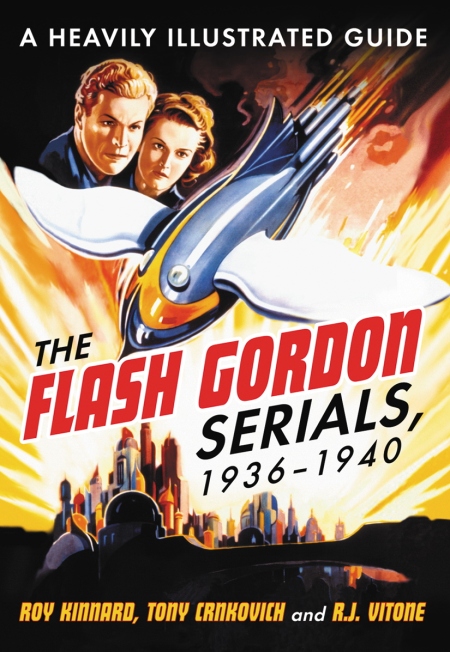The Flash Gordon Serials, 1936-1940
A Heavily Illustrated Guide
By Roy Kinnard, Tony Crnkovich and R.J. Vitone
McFarland, 2011
ISBN: 9780786466153
Flash Gordon rocketed onto the movie screen in 1936, in a serial of the same name which ran for 13 episodes. He appeared in two further movie serials – a now defunct format, killed off by television – in Flash Gordon’s Trip to Mars (1938) and Flash Gordon Conquers the Universe (1940), the latter title indicative perhaps of America’s new-found confidence as an emerging superpower. Most of us who went to Saturday Matinees as a child, to a Rialto or a local Odeon, will have seen some of these episodes, along with (say) a Laurel and Hardy short, a Disney film or a George Formby feature. You’d have to have been of a certain age, mind: matinees are firmly a thing of the past.
The authors have interviewed the two stars of the series, Buster Crabbe, an Olympian as well as an actor, and Jean Rogers, who played good girl Dale. And their thoughts and reflections, together with those of others involved in the triumvirate, have been incorporated into the text. That gen plus synopses of each and every episode, lots of black and white film stills and publicity photos, and the authors’ erudite and insightful comments, all contribute to making the book an entertaining, informative read.
On one page, for example, we learn that Episode 2 of Flash Gordon Conquers the Universe, an episode entitled ‘Freezing Torture’, makes use of footage taken from Leni Riefenstahl’s White Hell of Pitz Palu. While another similarly titled episode, ‘Flaming Torture’ (episode 6 of Flash Gordon), features a weird ballet sequence taken from The Midnight Sun, a silent film from 1927. That film has been lost for a long while; the fragment of the ballet is all that remains.
As a point of fact, Flash seemed to get captured, shackled and tortured on a frighteningly regular basis: kink, BDSM as we would say nowadays, was a definite subtext of the series – and of Alex Raymond’s original comic strip, come to that. BDSM is present in quite a lot of science fiction, actually, as Lewis Call’s recent book makes clear.
Priscilla Lawson, who played the captivating Princess Aura, is present in the photos and stills but was unable to contribute. She died young, following an injury in World War Two.
The Flash Gordon Serials, 1936-1940 is an ideal companion volume and a boon to all who love the character of Flash Gordon.
About the reviewer: P.P.O. Kane lives and works in Manchester, England. He welcomes responses to his reviews and you can reach him at ludic@europe.com
